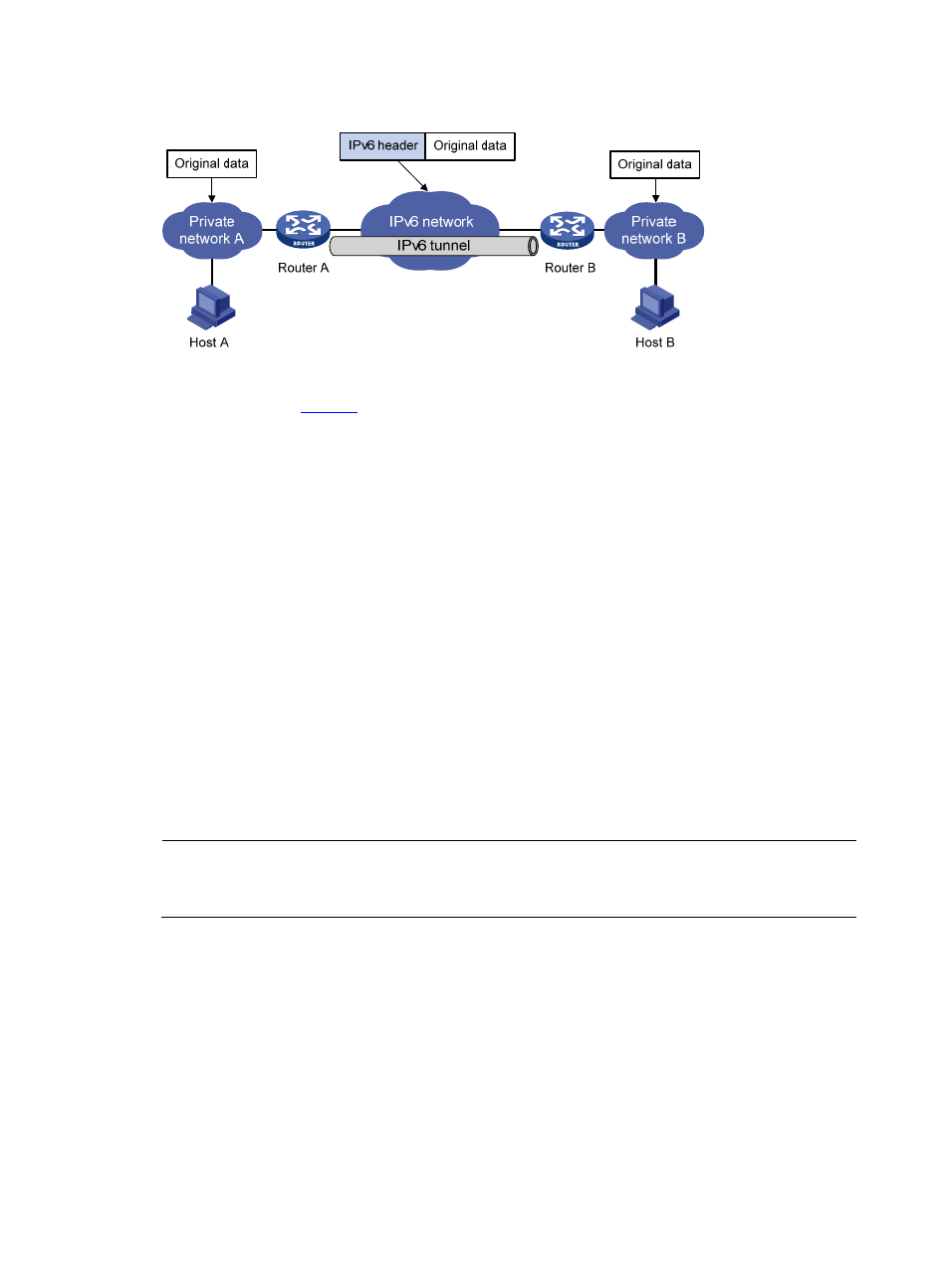Encapsulation and de-encapsulation, 6pe overview – H3C Technologies H3C SecPath F1000-E User Manual
Page 153

7
Figure 5 Principle of IPv4/IPv6 over IPv6 tunnel
The original data in
refers to an IPv4 or IPv6 packet.
Encapsulation and de-encapsulation
The encapsulation process is as follows:
1.
After receiving the original packet, the interface of Router A connecting private network A submits
it to the corresponding data module for processing. The data module then determines how to route
the packet.
2.
If the packet needs to be routed to Host B connected to Router B, the packet is sent to Router A’s
tunnel interface that is connected to Router B.
3.
After receiving the packet, the tunnel interface adds an IPv6 header to it and submits it to the IPv6
module for processing.
4.
The IPv6 module re-determines a route according to the destination address in the IPv6 header.
Contrary to the encapsulation process, the de-encapsulation process is as follows:
1.
The packet received from the IPv6 network interface is sent to the IPv6 module for processing.
2.
If the passenger protocol is IPv4 or IPv6, the packet is sent to the tunnel processing module for
de-encapsulation.
3.
The de-encapsulated packet is sent to the corresponding protocol module for the secondary
routing process.
NOTE:
GRE can realize the IPv4/IPv6 over IPv6 tunnel function. For related configurations, see
GRE
Configuration in the VPN Volume.
6PE Overview
IPv6 on the provider edge routers (6PE) is a transition technology by which Internet service providers (ISPs)
can use existing IPv4 backbone networks to allow communications between isolated IPv6 networks.
The major concept of the 6PE is that the IPv6 routing information of users is converted into IPv6 routing
information with labels and is spread into IPv4 backbone networks of ISPs through Internal Border
Gateway Protocol (IBGP) sessions. When IPv6 packets are forwarded, traffic will be labeled after
entering tunnels of backbone networks. The tunnels can be GRE tunnels or MPLS LSPs.
